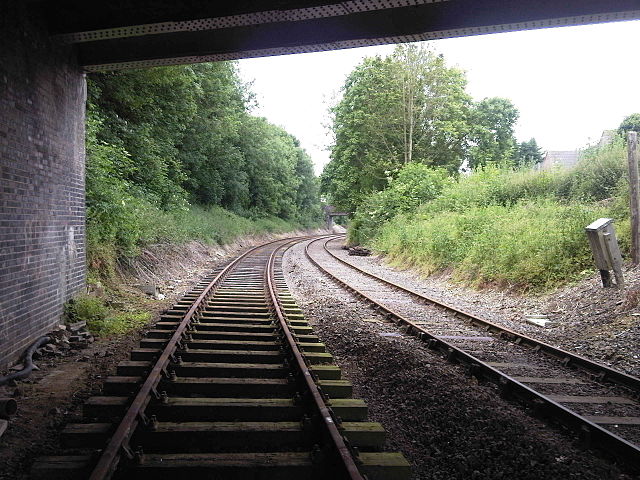The Mid-Norfolk Railway (MNR) is a 17+1⁄2 miles (28.2 km) preserved standard gauge heritage railway, one of the longest in Great Britain. Preservation efforts began in 1974, but the line re-opened to passengers only in the mid-1990s as part of the "new generation" of heritage railways. The MNR owns and operates most of the former Wymondham-Fakenham branch line of the Norfolk Railway. The branch opened in 1847, was closed to passengers in stages from 1964 to 1969 as part of the Beeching cuts, and was finally fully closed to goods traffic in 1989.
Mid-Norfolk Railway
A GER Class T26, a type often used on passenger trains to Wells before the Grouping, after which most such trains were operated by Claud Hamilton 4-4-0s.
Bridge 1692, partially rebuilt for double track, showing 1965 to present day singled line.
Derelict remains of Dereham station in 1990.
Wymondham to Wells Branch
The Wymondham to Wells Branch was a railway built in stages by the Norfolk Railway, Eastern Counties Railway and Wells and Fakenham Company between 1847 and 1857. The railway ran from Wymondham in the south, through Dereham and Fakenham to the coastal town of Wells-next-the-Sea; more specifically, the line ran from Wymondham South Junction, where it met the present-day Breckland Line. Passenger services along the line lasted until 1969; the railway continued to be used for freight until 1989. The southern section of the railway now forms the Mid-Norfolk Railway, with part of the northern section serving as the narrow gauge Wells and Walsingham Light Railway.
A GER Class T26, a type often used on passenger trains to Wells before the Grouping, after which most such trains were operated by Claud Hamilton 4-4-0s.[page needed]
Visual effect of original double track restored near Wymondham Abbey.
Derelict remains of Dereham station in 1990.
Looking towards Wells, 1990s






